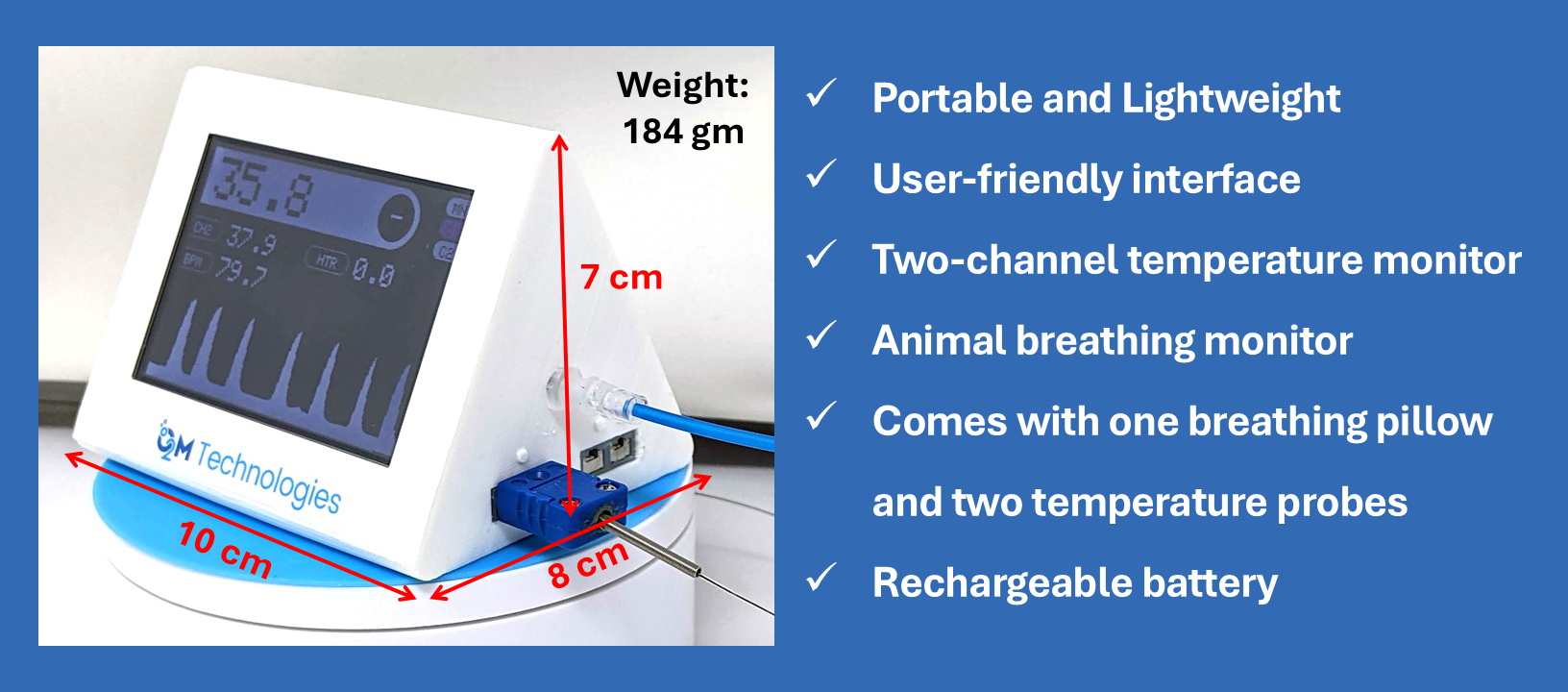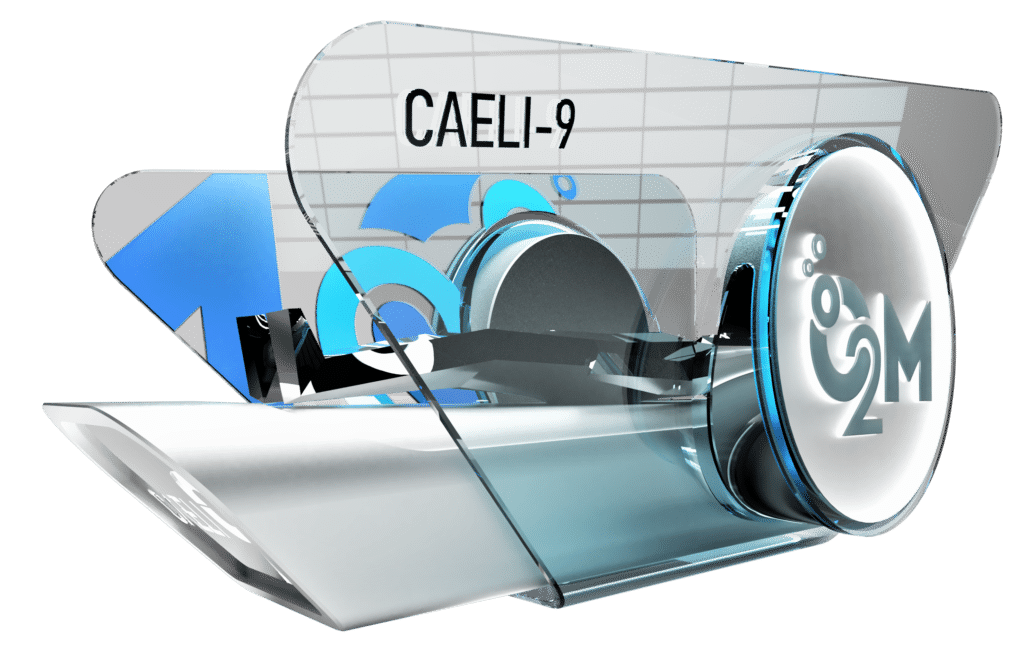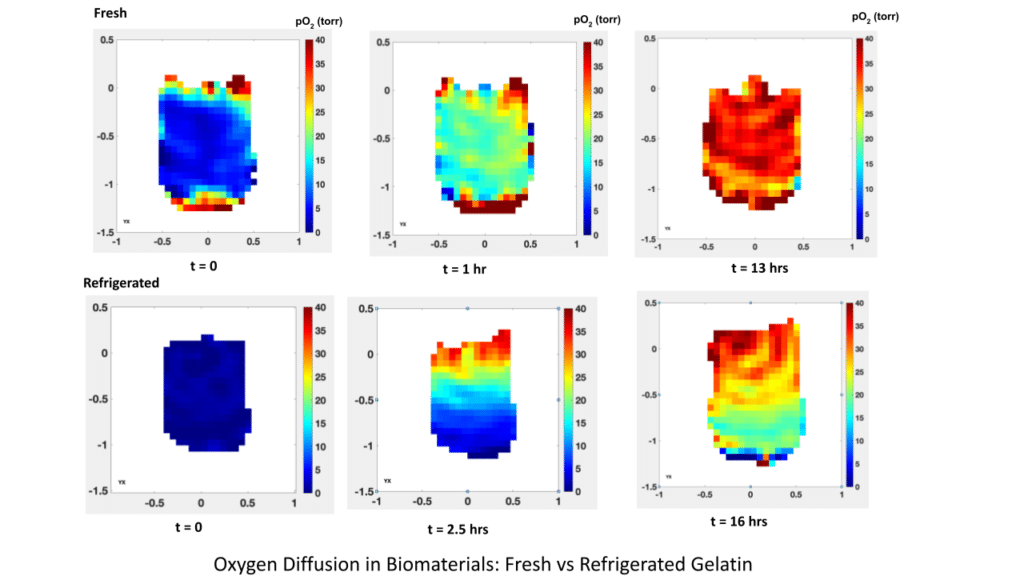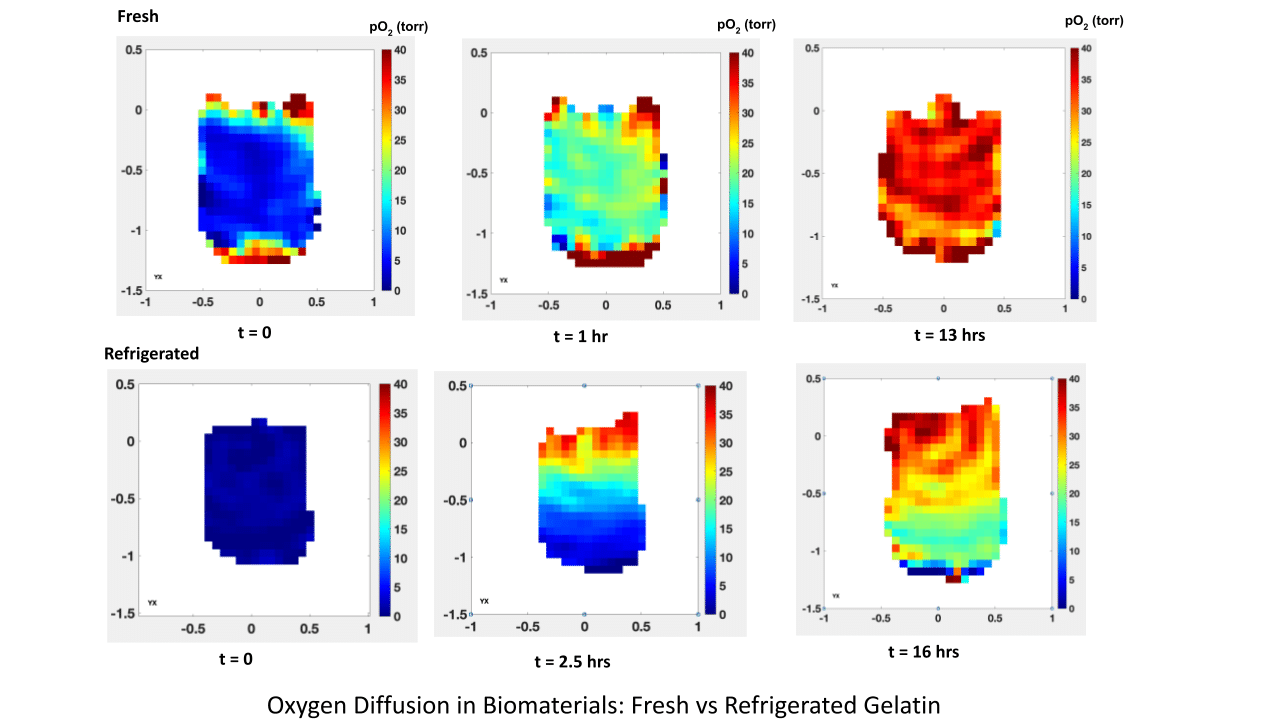LiteAPM: Transportable Lightweight Small Animal Physiological Monitor
We’re excited to introduce a Transportable Lightweight Small Animal Physiological Monitor, LiteAPMTM, a compact and portable solution designed to bring peace of mind and precision to your small animal experiments. This all-in-one system features a two-channel animal temperature monitor and a single-channel respiratory monitor. It comes with two temperature probes and a breathing pillow (pressure-based sensor) to monitor animal temperature and measure breaths per minute, ensuring your animal’s well-being throughout every stage of the experiment.
The LiteAPMTM can be used in animal surgery room, during transporting animal from one to another room or during the imaging experiments, f.e. The animal physiologic data can be transferred to a computer to keep a full log of animal health.
With a rechargeable battery, large 4" screen, small footprint, and user-friendly interface, it’s ideal for any lab environment. Not only does it help safeguard animal health, but it also provides valuable physiological data, allowing researchers to evaluate how temperature and respiratory rate may influence experimental outcomes.
Simple, reliable, and smart, LiteAPMTM is a must-have for any lab working with animal models.

LiteAPM: Transportable Lightweight Small Animal Physiological Monitor Read More »





